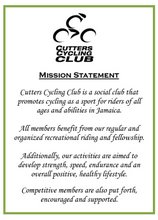 Descending ability, like any other skill, is best improved with practice. The more time you can spend on technical descents the more confidence and speed you will be able to develop. A few local hot shots I know practice on their motorcycles before races with strategic descents. While frequent group rides are the best way to develop real bike handling skills descending with others will not necessarily help you descend faster alone.
Descending ability, like any other skill, is best improved with practice. The more time you can spend on technical descents the more confidence and speed you will be able to develop. A few local hot shots I know practice on their motorcycles before races with strategic descents. While frequent group rides are the best way to develop real bike handling skills descending with others will not necessarily help you descend faster alone.Relax
The most important aspect of fast descending is relaxation. Too much anxiety can narrow your concentration and you will miss important aspects of the road surface ahead. Pushing the speed to the point of fear will not help develop descending skills. Work on relaxation and smoothness (no sudden movements, braking or turning) and the speed will follow.
Think Ahead
A fast descender will set up well in advance of a corner, on the outside, and do whatever braking needs to be done before entering the turn. Then hit the apex on the inside edge of the road, finally exiting again on the outside (always leaving some room for error and unforeseen hazard). The key is to gradually get into position and smoothly follow a line through the corner. If you find yourself making any quick, jerky movements take that as a sign that you need to slow down and devote a little more attention further up the road.
Brake Ahead
Use your brakes only up to the beginning of a corner, Never Use The Brakes In A Corner. At that point any traction used for braking significantly reduces the traction available for cornering. If you do have to brake after entering the curve straighten out your line before applying the brakes. If the road surface is good use primarily the front brake. If traction is poor switch to the rear brake and begin breaking earlier. In auto racing circles there are two schools of thought on braking technique. One advocates gradually releasing the brakes upon entering the corner, the other advises hard braking right up to the beginning of the curve and abruptly releasing the brakes just before entering the curve. A cyclists should probably combine these techniques depending on the road surface, rim trueness, brake pad hardness, headset wear and the proximity of other riders.
Leaning
Motorcyclists and bicyclists lean their bikes very differently in a corner. When riding fast motorcyclists keep their bikes as upright as possible to avoid scraping the pegs or pipes. Bicyclists on the other hand lean their bikes into the corner and keep the body upright. Both motorcyclists and bicyclists extend the inside knee down to lower the center of gravity. To pedal through the corners make like a motorcyclist and keep the bike upright while the inside pedal is down.
Passing
One of the most difficult things about descending in a group is passing. It is not always possible to begin the descent ahead of anyone who may be descending slower. If you find yourself behind someone taking it easy either hang out a safe distance behind or pass very carefully. Passing on a descent is always difficult and dangerous. By the same token, if you find yourself ahead of someone who obviously wants to pass, let them by at the earliest safe moment. It's never appropriate to impede someone's progress on a training ride whether they are on a bicycle or in a car. Always make plenty of room for anyone trying to pass no matter what the speed limit may be. Be courteous and considerate and forever happy.
Go Easy
Remember that downhill racing is not what bicycle racing is all about. There is no need to keep up with the Jones'. This is what causes many a crash. Compete against yourself on the descents. Belgians are notoriously slow descenders due to the consistently rainy conditions there. Yet some of the best cyclists in the world train on those rainy roads. Don't get caught pushing it on some wet or unfamiliar descent. Be prepared for a car or a patch of dirt or oil in the middle of your path around every blind corner no matter how many times you've been on a particular road. Take it easy, relax, exercise your powers of concentration and hammer again when you can turn the pedals.
Tire Pressure
Reducing tire pressure will both improve traction (to a point!) and reduce your speed, making cornering easier. Motorcycles, for example, operate with very low tire pressures because the motor can soak up the inefficiency much more readily than a rider can. Road riders generally want to inflate their tires to near the labelled maximum, usually 120 to 170 PSI, and will not want to throw away the speed that provides that except for unusual situations.
When traction is paramount, using about half that pressure -- so there is a noticeable bulge when riding -- will help at the expense of significantly higher rolling resistance. With less pressure, the patch where the tires mee the road surface will be significantly larger. However, the wasted energy of rolling resistance will get soaked right into the tires, increasing tire pressure, and temperature, which can be critical enough after half an hour of steady braking on a mountain downhill for the glue holding sew-up tires to your rims.



No comments:
Post a Comment